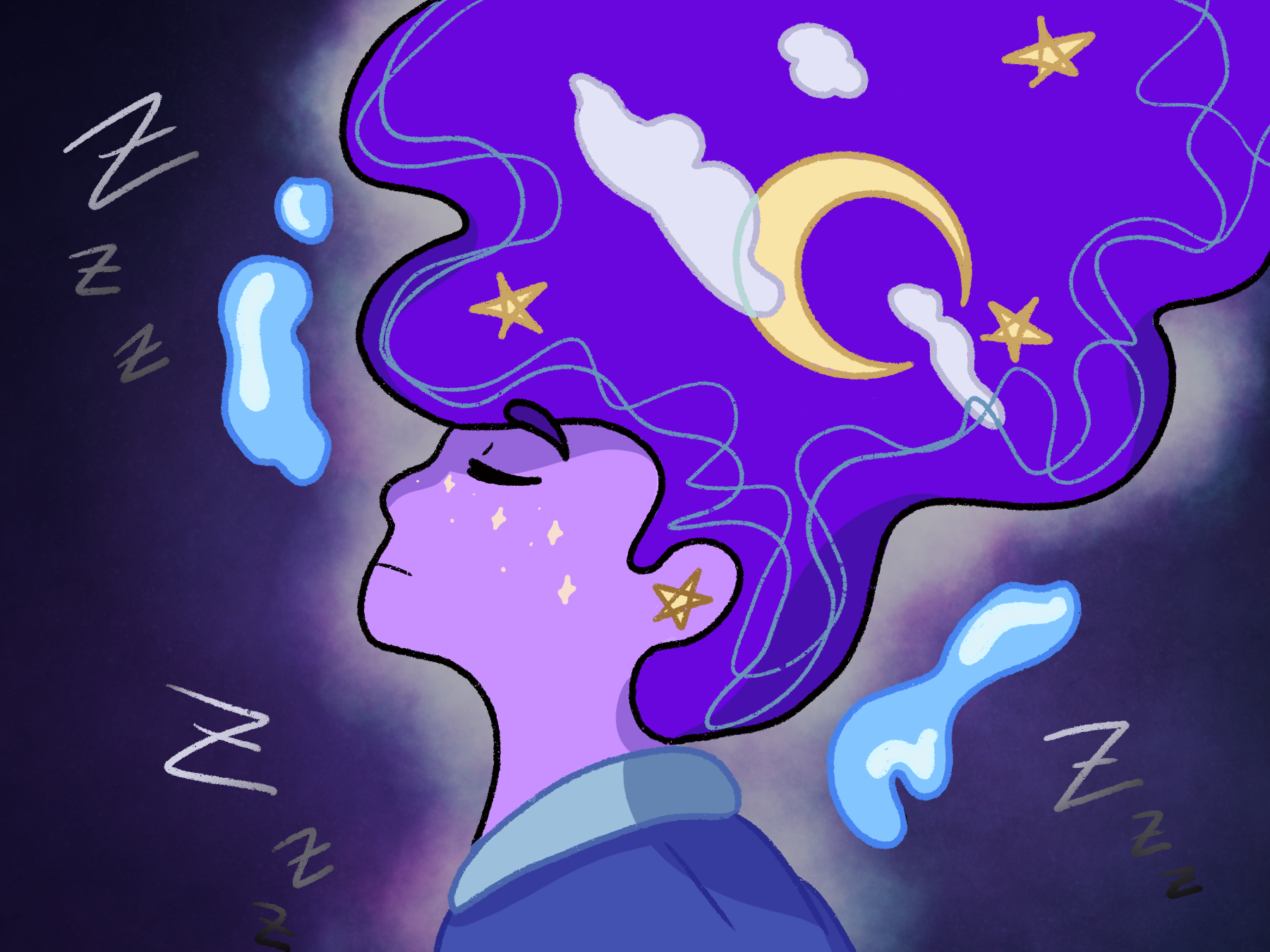Have you ever woken up from a nightmare in a cold sweat with your heart pounding? Have you ever had a recurring dream from childhood that you can still recall? Have you ever been left dazed and confused after waking up from an unsettling dream?
Waking up troubled after a dream about a particular person, place or event tends to reflect reality — or at least how we interpret reality. Dreams are a way for the brain to comprehend and analyze different aspects of life, which tend to be the parts of waking life that are more challenging or disconcerting. They function like an emotional outlet for forced self-reflection.
Dreams occur throughout the three sleep cycles, but are most vivid and intense in the resting eye movement, or REM, stage. During REM sleep, brain activity increases to nearly match its level of activity during waking hours. So, if you startle yourself awake in the middle of a dream during your REM cycle, you’re more likely to remember it and associate it with specific details and emotions. Because the dreams within this cycle tend to be the most intense, they likely feature representations of the biggest threats to our well-being.
Dream interpretation is still widely debated today. There exists a spectrum of opinions on the importance of dissecting dreams. Most Western psychologists work under the assumption that the emotions experienced throughout a dream are more valuable to understand than the potential symbolism of the elements within a dream. Scientists do not yet know whether humans are capable of accessing the part of the brain that generates and interprets metaphors, which is why dream interpretation can be considered unreliable.
Despite its polarizing nature, dream interpretation has been around for thousands of years. The first documented interpretations were found in Mesopotamia, or modern-day Iraq, which is known for being the location of one of the first human settlements. Ancient Greeks and Romans believed dreams could provide insight into past, present and future experiences.
They sometimes had difficulty discerning reality from dreams because dreams were considered an extension of reality. In Hinduism, dreams are considered to be manifestations of past deeds and can indicate good or bad fortune in the future. They are considered to be illusions created by the god Vishnu to bring individuals on a journey of realization. In Aboriginal culture, dreams are believed to be the true source of knowledge within the mind. This is a direct reflection of Aboriginal beliefs about the creation of Earth, known as “The Dreaming,” in which spirits descended upon the land and fabricated the elements of nature.
Many Native American populations have a deep connection with the spirit world. Some believed the air was filled with dreams at night, which led to the creation of the dream catcher to contain bad dreams and protect people from evil spirits. Dreams are essential for connecting and communicating with the supernatural world. Elders were often confided in for dream interpretation. In Anishinaabe and Ojibwe tribes, both originally located around the Great Lakes region, humans were believed to have two souls, one of which would travel and live in dreams at night. These tribes, along with other Native American groups, found symbolic meaning in different aspects of nature, like animals and plants. Each animal was considered a spirit guide with a specific gift. In most Western theories of dream interpretation, Native American spirituality is intertwined in the perception and analysis of the presence of nature.
Dream interpretation traditions can be found in nearly every culture throughout history, and explanations of dreams have nearly always been centered around healing. These reflections on the perception of reality can provide a deeper understanding of what aspects of life one may need to give extra attention to. The ten most common dreams each indicate underlying fears and anxieties or suggest new beginnings, depending on the emotions related to certain actions that occur in a dream. For example, dreams of falling can signify fears of inadequacy and insecurity if one felt anxiety while experiencing the dream, or they can represent the ability to embrace change if one feels comfortable and content.
Furthermore, dreams that have a more positive outlook can be indicative of healing. Rather than suggesting you need to tend to that aspect of your life, they can be seen as little messages of encouragement as you work in a positive direction. Dreams of pregnancy, which among many college students would induce worry in waking life, are actually considered signs of mental, spiritual or emotional growth and development in reality. Whether that growth is in a positive, negative or neutral direction depends on the emotional attachment to the pregnancy within the dream. Learning how to measure and evaluate the presence of your emotions within a dream may lead to a better understanding of your subconscious and perception of reality.
Anyone looking to get into dream interpretation should start by keeping a dream journal and attempting to remember the details of their dreams to kick-start a healing journey. You can also try sharing your latest absurd dreams with friends and try to interpret them together. Gathering the important takeaways from three or four vivid details from a dream will paint the most comprehensive picture of what is going on in your subconscious. Googling the dream interpretation of a few key words or phrases and using your knowledge of your waking life can piece together what your dream signifies for you. Whether you deeply believe in and rely on dream interpretation, or you detest the idea of finding meaning within your subconscious, analyzing dreams should be fun and lighthearted. Psychologists have struggled to understand the significance of different aspects of dreams for thousands of years, so take every subconscious metaphor with a grain of salt. Remember to tread lightly in the dream interpretation realm — dreams only hold as much weight as you choose to give them.









